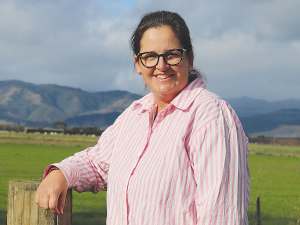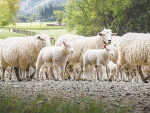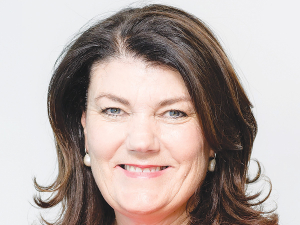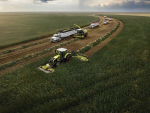Better genetics hold the key to better beef calves from dairy cows. That was the key message from a series of workshops by Beef+Lamb NZ to increase the overall value of beef exports to NZ. Two thirds of NZ’s beef kill is from the dairy industry but calves from dairy farms have in the past been seen as more of a by-product. Peter Burke reports.
The Olsens' dairy farm in the settlement of Opiki in the Horowhenua was the setting for the workshop which was attended by about 40 people.
Dr Christine Christensen, the chair Western North Island Farmer Council, says the objective of the day was get dairy farmers, calf rearers and finishers in the same room and show them the benefits of working closely together and highlighting the benefits of this. The idea is to eliminate the potential risk of calf rearers buying at a sale where there is no certainty of the quality of the calves.
“You could almost call it a form of rural speed dating. It’s about getting all three groups to see the benefits of working together for themselves and the beef industry as a whole,” she says.
Christensen says there are a whole range of issues around dairy beef production, including the fact some buyers of calves don’t like the particular colour of a calf. But she rightly points out that that once the skin is taken off, all animals look the same – so colour should not be an issue.
She says they held a similar workshop in Taranaki a few months ago and all parties were excited about the opportunities that the use of better genetics can bring.
At present around 20% of dairy progeny are sired by beef-type bulls, the majority of which are unrecorded sires.
The leading expert in improving dairy beef genetics is Professor Rebecca Hickson who says the real value of using quality genetics in the dairy industry is not widely understood. She says the challenge comes down to the fact that the person buying the straw is not the person who gets the value from the growth genetics. She says the dairy farmer is rightly concerned about gestation and easy calving rather than the buyers of that calf.
“At the moment, the calf is produced with an emphasis around what the dairy farmer needs, and so that’s what the beef industry gets, rather than giving benefits to the industry further down the line which is the growth the industry needs,” she says.
But Hickson says dairy beef progeny tests show that it’s possible with good genetics to deliver what the dairy farmer wants and what the beef industry needs and that no compromise is needed.











